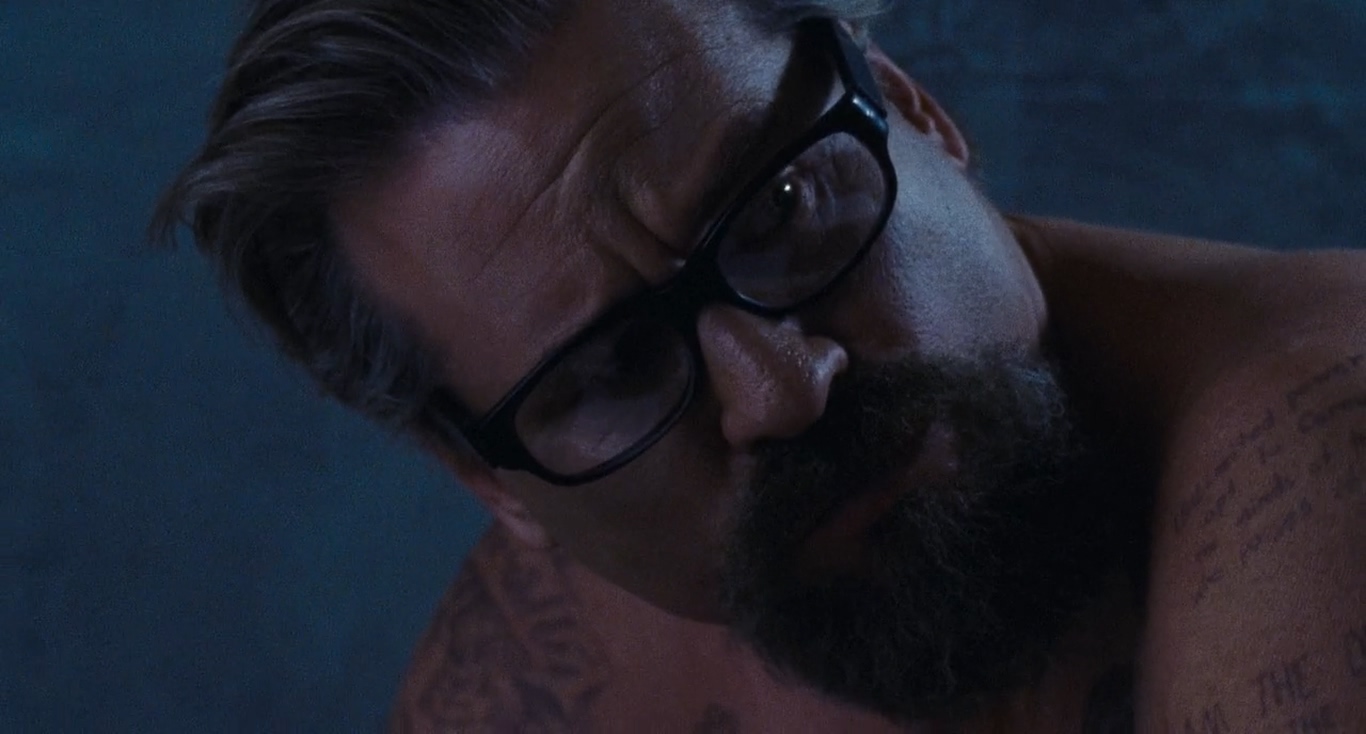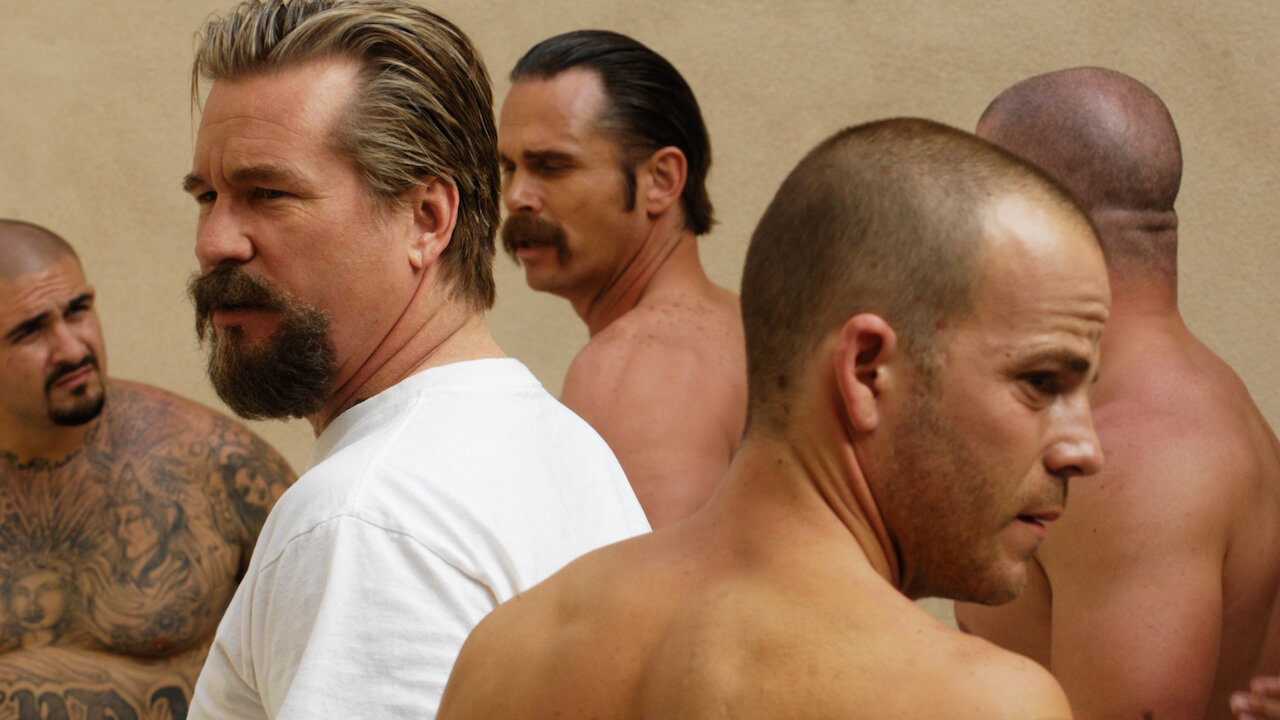There have been many prison movies in the past, and while all of them dramatize prison life to an extent, only some stay true to the volatile predispositions of the guarded space behind bars. While such films usually base their narrative on gang wars and daring escapades, veteran stuntman-turned-filmmaker Ric Roman Waugh sets his provocative and gruesome story apart by situating it in a world where traditional notions of the police as keepers of law and the prisoners as violators are subverted. The film chronicles the life of Wade Porter, which takes an unexpected turn when a burglar breaks into his house. Intending to protect his fiancée Laura and their little son, a frenzied Wade beats the intruder to death.
He is charged with first-degree murder and thus begins his life locked in the prison cell. Acted by a buffed-up Val Kilmer alongside Stephen Dorff in the lead role and flaunting Harold Perrineau in an unlikely evil character, the film grabs the attention of the viewers and the critics for its unfaltering portrayal of life behind the barbed wire. Although the film fails to create an epiphanic sensation, it packs a great deal of violent drama for genre lovers. If you seek to know whether the story is rooted in reality, consider us your ally.
Is Felon Based on A True Story?
‘Felon’ is partially based on a true story. Although the film is decidedly fictional, the story is loosely based on the violent series of events that unfolded in the infamous California State Prison in Corcoran in the 1990s. Also contributing to the script was Richard Caruso, a former prison guard at the facility whose experiences seem to have made their way into the film. Built upon the wetlands of the San Joaquin Valley, the prison facility was opened in February 1988, and at the time of its inauguration, the prison was touted as the most high-tech prison intended for the most notorious criminals of the country. We are talking about a prison that was once home to Charles Manson.

The same prison became subject to a nationwide controversy in 1996, only eight years after its opening, for reasons unprecedented in the history of the US. A headliner article by journalist Mark Arax from the Los Angeles Times broke the dreadful news of dehumanizing police brutality that went on behind the prison bars in this high-security prison. The report identified the California State Prison, Corcoran, as the most unsettled among 32 operational state prisons in the country. There were cases of barbaric police torture that would seem as if from a book of roman history – the police would apparently initiate fights between prison inmates while betting on the winner.
In its eight years of nascent history, the prison witnessed the death of seven inmates at the hands of the police, and around 50 more inmates were heavily injured, a statistic unprecedented in the history of the US penal system. “Greet the bus,” a term used by the police officers, referred to the severe battering that the new inmates arriving from other prisons would have to experience. The police officers justified the state-sponsored violence by saying that they were apparently trying to stop inmates from killing each other. However, Steve Rigg, a whistleblowing officer, divulged to the FBI that in most cases, the shootings were unjustified, and in some instances, the errors in judgment led to the death of the wrong inmate.
The bulk of the cinematic narrative takes place in the Security Housing Unit (SHU), a “prison within a prison” intended for the most troublemaking inmates, the ultimate baddies. But at times, the banal brutality of the police surpasses even those of the most notorious prisoners. In the film, a series of events lead to Wade’s isolation, and he ends up in the SHU. His stay in the darkened prison cell turns hellish by the day, but with the appearance of veteran lifer John Smith, Wade gets a momentary respite.
If you have seen the film, you may have been outraged by the diabolical figure of Lieutenant Jackson. His character seems to be modeled upon the ruthless lieutenant who reportedly shocked an inmate in the genitalia with a taser gun. All things considered, the film is an honest portrayal of life behind the barbed fences, as brought to daylight by the report. However, if you are asking whether the tattoos of Val Kilmer are real or not, we are compelled to say that they were meticulously drawn by Christien Tinsley, the make-up artist. His artistic hands made sure that the tattoos look not only authentic but also weathered.
Read More: Best Movies About Police Brutality


You must be logged in to post a comment.